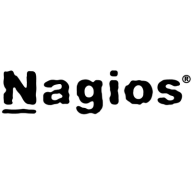

DX Unified Infrastructure Management and Nagios Core are prominent players in the IT infrastructure monitoring category. DX UIM holds an advantage with its extensive features and superior support, but Nagios Core offers flexibility and cost efficiency, especially for those with in-house expertise.
Features: DX UIM provides a comprehensive monitoring solution ideal for managing large infrastructures with seamless scalability. It supports various probes, allowing extensive customization without administrative access, enhancing user flexibility. The centralized management system simplifies deployment and monitoring, making it an efficient tool for enterprise environments. Nagios Core is highly flexible, offering significant customization benefits through its open-source nature and plug-in integration capabilities. However, this demands higher expertise for configuration. Its primary strength lies in the potential for bespoke integrations made possible by a vast library of plugins.
Room for Improvement: DX UIM requires improvements in customer support and could simplify its VMware monitoring capabilities. Users note that it is resource-intensive and suggest enhancements in HTML5-based components and documentation. Nagios Core experiences usability challenges with a slow interface, lacking a GUI which makes configuration complex. It could benefit from broader integration options and better scalability. Additionally, both products could improve their dashboards and reporting tools, though DX UIM is better positioned to address these due to its proprietary nature.
Ease of Deployment and Customer Service: DX UIM excels in versatile deployment across hybrid and cloud environments, aiming for integration ease. However, its customer service has been inconsistent, especially after its acquisition by CA Technologies. Nagios Core is designed for on-premises deployment, benefitting from its open-source flexibility. Community support is robust, though lacking structured channels akin to commercial options, limiting customer service quality comparative to DX UIM. Flexibility remains a key advantage for users with specific deployment needs.
Pricing and ROI: DX UIM, with a higher pricing tier, justifies its cost with a substantial ROI through advanced features and scalability, reducing long-term operational costs. It caters to enterprises looking to automate processes efficiently. Conversely, Nagios Core, free and open-source, offers cost savings in software, but customization and maintenance may incur additional expenses due to the need for skilled personnel. The ROI heavily depends on in-house technical expertise, potentially leading to financial efficiency if implemented appropriately.
Improving direct support for end customers, similar to Microsoft’s model, would be beneficial.
The solution helps with capacity management, enabling us to determine when we need to scale up the network.
The solution is scalable.
I tried many other solutions at work, however, in terms of Nagios, I haven't seen any disruption or downtime.
Better support and more accessible resources are crucial.
The pricing of DX Unified Infrastructure Management is high and often a concern for customers.
DX Unified Infrastructure Management offers visibility into network activities, integration capacity, and enhances monitoring at the core and application levels.
You can monitor anything.


DX Unified Infrastructure Management is the only solution that provides an open architecture, full-stack observability and zero-touch configuration for monitoring traditional data center, public cloud, and hybrid infrastructure environments.
Designed to ensure an optimal end-user experience, this solution provides a modern HTML5 operations console that makes it easy and fast for today’s IT teams to implement, use, and scale – leading to faster time to value.
This is IT infrastructure monitoring's industry-standard, open-source core. Free without professional support services.
We monitor all Network Monitoring Software reviews to prevent fraudulent reviews and keep review quality high. We do not post reviews by company employees or direct competitors. We validate each review for authenticity via cross-reference with LinkedIn, and personal follow-up with the reviewer when necessary.